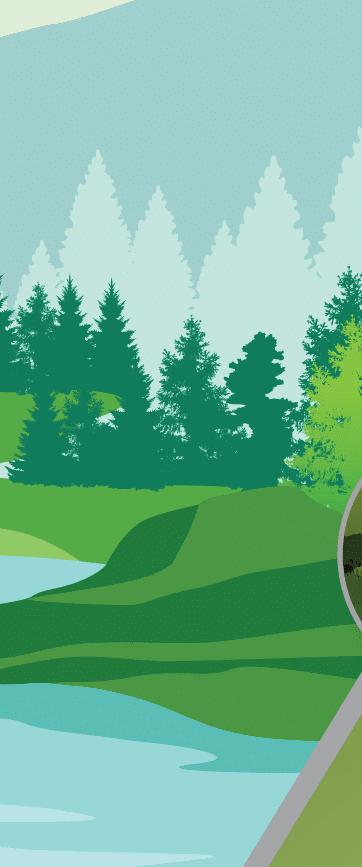

no one leaves home unless home is the mouth of a shark





no one leaves home unless home is the mouth of a shark


There is some type of transience that comes with being a college student. A majority of us will live in Eugene for only four years, if not less. So how do we build community? How do we build relationships with our neighbors, give to the place and the people despite the acknowledgement of our shorter stay? We must advocate, tell each others’ stories and know our neighbors. We must remind ourselves that we are alive, connected, thrumming with it. Do not abandon each other, we must remember. We’re all we have. This has become my hope for Ethos: a collective of our community’s stories. Reminding ourselves, and each other, that there is some type of comradery that comes with the space we share.
When I started at Ethos, I was told it was a news magazine. All I had to go on was this idea and the publication’s enormous reputation. This was my first cycle of print with
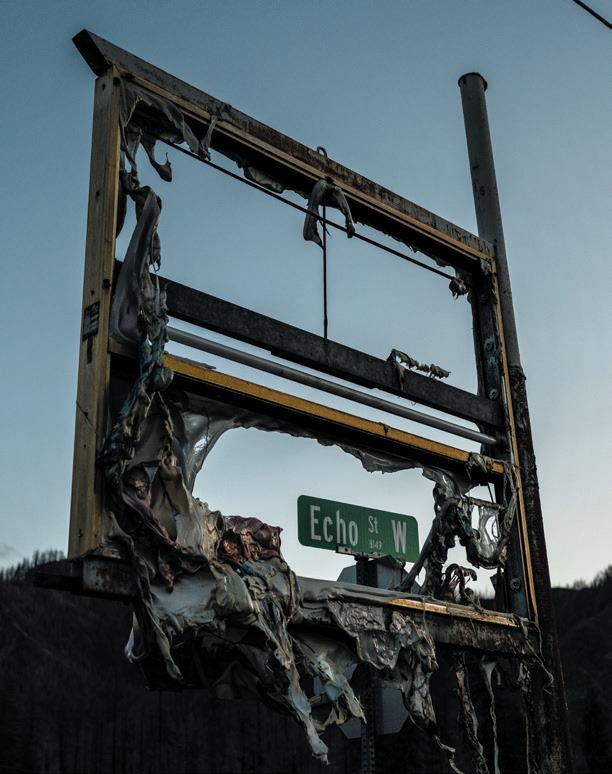
Ethos, like many other members of our staff. Ethos has undergone a reconstruction.
Despite the greenness of our staff, I believe we have presented a beautiful picture of our community.
Funny how a publication can become so much more than its reputation.
Within the pages of this magazine, you will find stories about cooperative living and dietary restrictions. We have curated stories from across our community.
I want to thank everyone who played a part in this issue, and I want to thank whoever reads it.

Editor-In-Chief
Stella Fetherston
Ethos is a nationally recognized, award-winning independent student publication. Our mission is to elevate the voices of marginalized people who are underrepresented in the media landscape and to write in-depth, human-focused stories about the issues affecting them. We also strive to support our diverse student staff and to help them find future success.
Ethos is part of Emerald Media Group, a non-profit organization that’s fully independent of the University of Oregon. Students maintain complete editorial control over Ethos and work tirelessly to produce the magazine.

On The Cover: Devastation following the Holiday Farm Fire, which damaged the McKenzie River Valley in Sep., 2020. (Ian Enger/Emerald)
Poem: “Home” by Warsan Shire Paper Texture by Joao Vitor Duarte on Unsplash
Email editor@ethosmagonline.com with comments, questions and story ideas. You can find our past issues at issuu.com/ethosmag and more stories, including multimedia content, at ethosmagonline.com.
Co-op community at Walnut Street
When climate discussion is personal
Navigating gluten intolerance
Eugene drag finds new space
editorial
Editor-In-Chief
Stella Fetherston
Managing Editor
Ty Tilden
writing
Associate Editor
Alisa Dougherty
Writers
Aaron Drummond
Ana Haapala
Bayla Orton
Lily Reese
Design Editor
Ryan Ehrhart
Designers
Kayla Chang
Abigail Raike
Sadie Wehunt
illustration
Art Director
Austin Sandersfield
Illustrators
Stephanie Yang
photography
Photo Editor
Henry Schutt
Photographers
Natalie Mathis
Ayla Rivera
Fact-checking Editor
Sofie Lara
Fact-checker
Aaron Drummond online
Digital Manager
Julian Canez
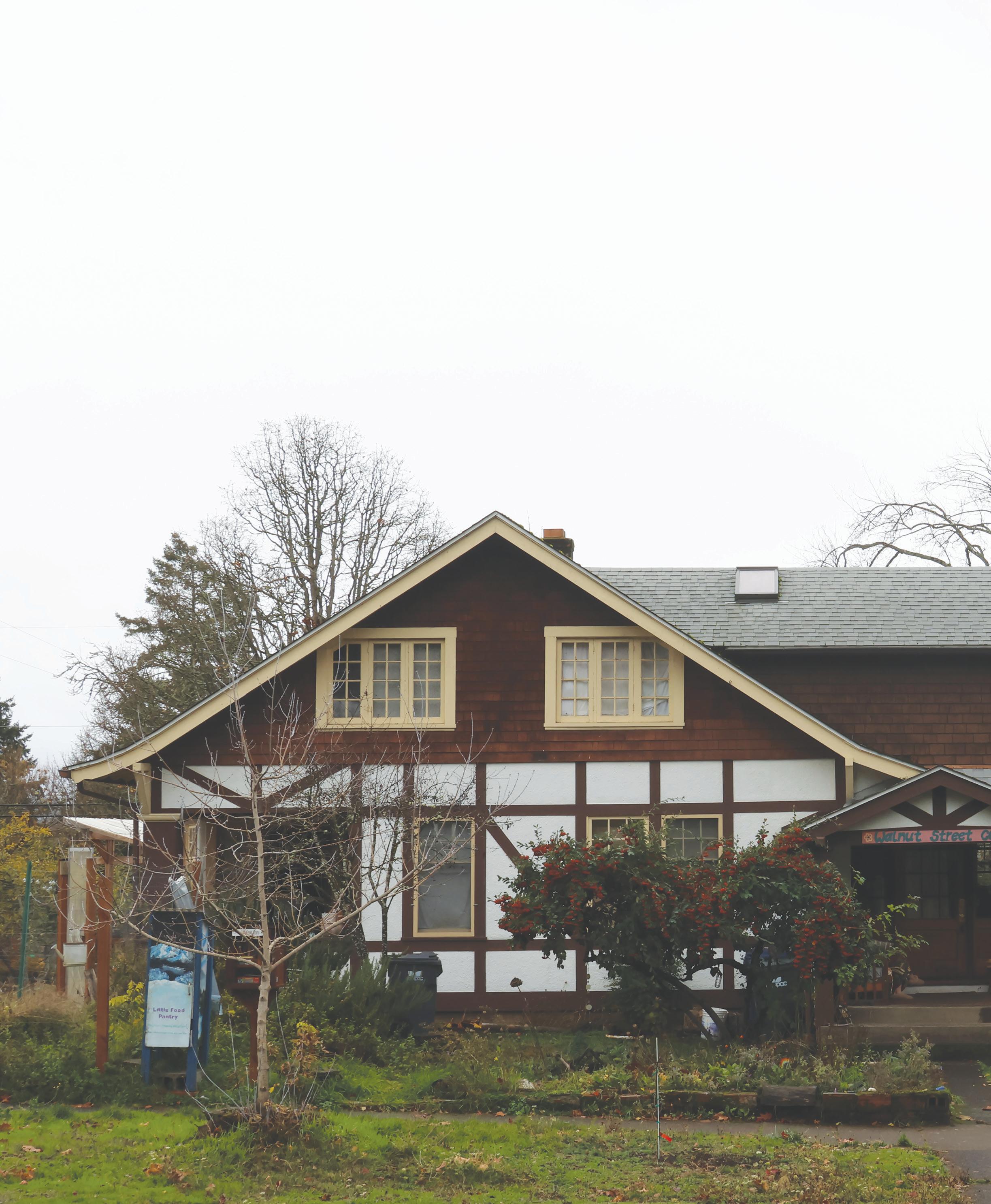
Eugene residents foster connection, communication and collaboration at nontraditional housing co-ops

The Walnut Street Co-Op, located in Eugene’s Fairmount neighborhood, was started in 2000. Today, it remains home to some of its original members.
A shared living space at the Walnut Street Co-op, one of many places where people collectively fill the room with the things they enjoy like puzzles, games, plants, and cats.
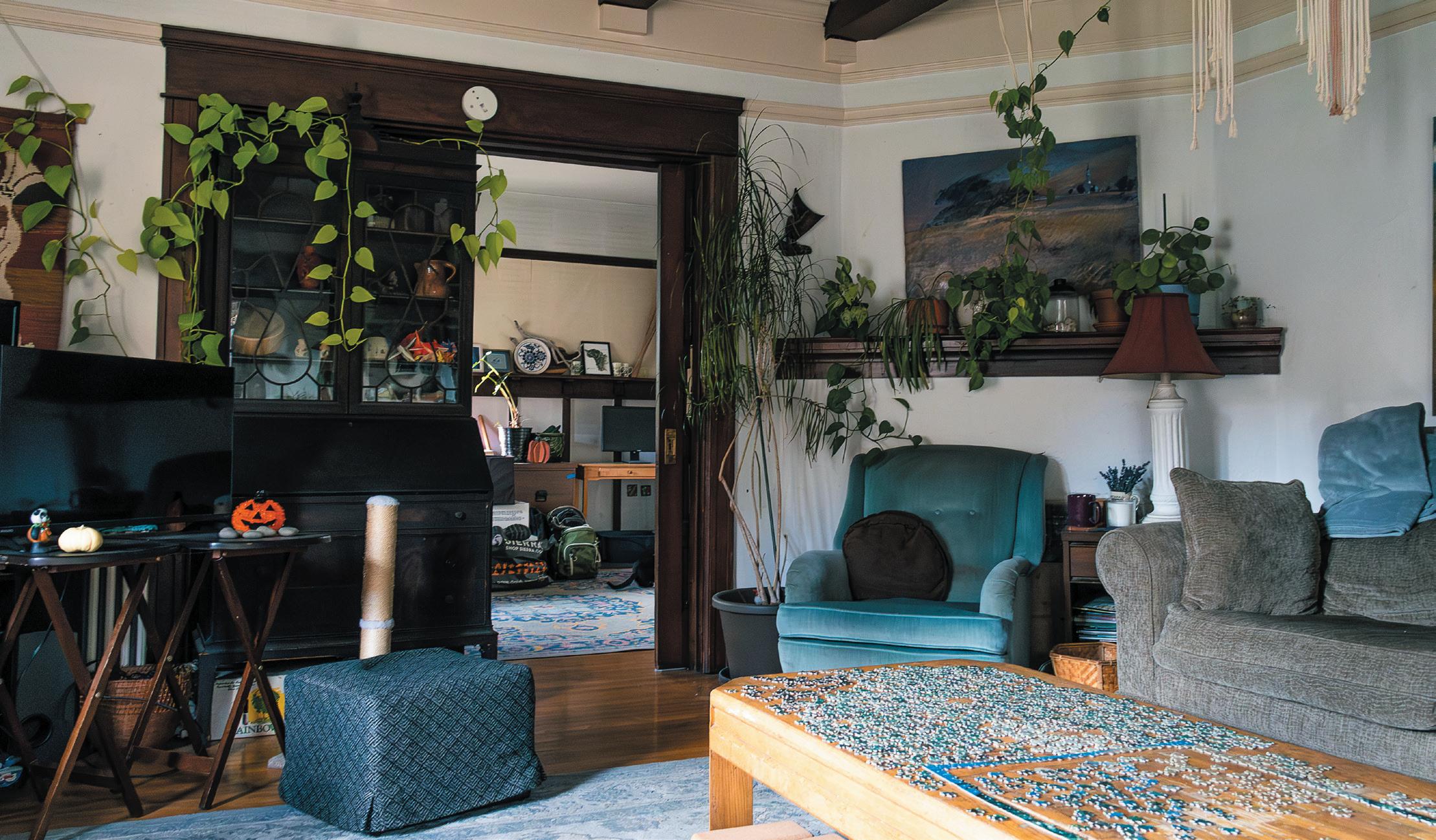
The streets of Eugene’s Fairmount neighborhood — situated between the east edge of the University of Oregon’s campus and Hendricks Park — are lined by ornate, expansive houses with rambling front yards. Native shrubs and flowers burst towards the sidewalk, tomato and grape vines dangle with fruit and Little Free Libraries are scattered every few blocks.
The Walnut Street Co-op, with its tattered prayer flags and hand-painted sign, fits right in. A faded flag with a picture of the Earth flaps in the wind over a collection of overgrown garden beds which house kale, tomatillos, and a wooden headstone that reads “RIP oligarchy.”
The house, a huge, beautiful home on a corner lot, might resemble the rest of the block, but the co-op’s residents don’t approach housing like their neighbors do. The Walnut Street Co-op is an intentional community, a living arrangement in which house members share food, responsibilities, decision-making and common values.
In many co-ops, residents share ownership of the property as well, but Walnut Street’s nine residents instead pay a low monthly rent to a corporation in the co-op’s name.
The house’s residents are much more than traditional roommates — they’re brought together by a desire for something deeper.
“We are intending to do things together that shape our shared community culture,” Tom Atlee, an early member of the co-op who has lived there since 2001, said. “We all want to be together in some relational or theoretical way.”
The house’s decoration and layout reflect these values. In the mail room — a hallway overflowing with letters, artwork, books and magazines — an “appreciation wall” hangs on the back of a door. Envelopes brightly labeled with each housemate’s name adorn the space, and passersby fill them with quick notes of gratitude when the thought strikes.
The living rooms, of which there are three, are decorated with personal art, dozens of plants, stacks upon stacks of books and furniture of sentimental value. One housemate donated a handsome desk that used to belong to his grandmother.
At Walnut Street, residents build community by sharing meals — they cook and eat dinner together four or five nights a week — and by maintaining the house, garden and outside spaces with monthly work parties. They also practice a form of group communication and decision-
We are intending to do things together that shape our shared community culture.
Tom Atlee co-op housemate
A photo board found in one of the house’s three living rooms. It highlights shared values of the house members in grass roots organization and activism.

making called dynamic facilitation, an approach that encourages dialogue between different perspectives and aims for whole-group consensus.
Dynamic facilitation is central to the co-op’s goals and history. The founding members, who were activists and community organizers, met at a dynamic facilitation workshop in Seattle, Washington in 2000.
A wealthy resident who had previously lived in a rural intentional community bought the Fairmount property, and the rooms quickly filled through word-of-mouth in Eugene’s activist networks.
As Atlee describes it, the whole thing happened almost by accident.
“We didn’t collectively decide to work towards making a co-op,” he said. “The chance came along and things fell together — what I was trying to do was spread dynamic facilitation in the activist world, and I sort of grandfathered the co-op into existence without really thinking I was going to do that.”
The house’s demographics have fluctuated over time. While the original members came from activist circles, college students also come and go — at one time they made up half of the house’s membership. At 77, Atlee is the oldest resident.
Slow, who doesn’t use a traditional last name, has lived at Walnut Street off and on for two decades. He runs in dynamic facilitation circles and wanted to try co-op living for years before he got the chance, so it was a natural fit.
At the co-op, he’s continued his interest in dynamic facilitation.
“I pay a lot of attention to the human element,” he says of his role in the coop, where he takes on mediation and communication responsibilities. His goal is not to eliminate conflict but to move through it effectively: “Peace is
conflict done well,” he said.
Slow sees important applications for dynamic facilitation in the broader world, too. In today’s political climate, he sees opportunity for dialogue and growth.
“Where are the cracks and the opportunities for alliances in politics?” he asks. “The activist world is so fractured into electoralists and grassroots people — but what about seeing both?”
Dynamic facilitation drew many co-op members to Walnut Street, especially in the early years, but some residents were simply attracted to the idea of a busy, social living space.
Brex, who belongs to a newer and younger generation of housemates, has lived at the co-op for six months. They landed in Eugene in January after a cross-country move, and Walnut Street is the first co-op they’ve lived in.
“I was at a crossroads,” they said. “I wanted to experience a different kind of lifestyle and this was the time to do it — to change the trajectory of my life.”
Brex far prefers cohousing to living alone.
“I like the sounds of other humans living — the hustle and bustle.”
They compare it to their first few months in Eugene when they lived in an apartment.
“There’s a reason they don’t call them ‘togetherments,’” they said. “I don’t do well living alone.”
Other residents find it hard to overstate the impact of co-op living on their lives.
“It’s been the most important thing — it’s where I’ve lived for a third of my life,” Atlee said. “I’ve become more humble and less ideological. You change as other things are changing, and you’re just part of the big picture.”
Not everything is rosy all the time — just like any community, the co-op has conflicts.
I wanted to experience a different kind of lifestyle and this was the time to do it — to change the trajectory of my life.
Brex co-op housemate
“It’s just like a relationship, or a family,” Atlee said. “There is tension, and there is conflict — it’s still the real world.”
Slow echoes this sentiment: “I was worried I was being too romantic about it — that once I tried it I’d hate it,” he said. “It is life and there are things that are hard.”
But there are silver linings to conflict, he says, because it allows what he and Atlee call “compassionate accountability.”
The group went through a major upheaval a few years ago in which five people left in the aftermath of a disagreement, and COVID has left a lasting impact on the co-op. The new generation of younger members is enthusiastic about tackling the house’s problems and projects, keeping the spirit alive and moving towards a long future.
“I’m ready to make the space beautiful and functional — for us and for everyone,” Brex said.
The co-op holds occasional potlucks for friends and neighbors in the summer and the fall, opening its doors to the community and sharing its space and stories.



Words Lily Reese
Photos Ayla Rivera
Design Abigail Raike
As climate change knocks down our door, encroaching on all parts of the United States, the Environmental Studies Program shifts curriculum to mention recent climate crises in their class discussions and lectures. ENVS classes combine humanities and quantitative research spanning over many different topics from natural sciences to environmental ethics. However, as of recent, many faculty have battled with remaining sensitive while vocalizing the realities of climate change in the classroom. Many students and staff have felt conflicted approaching climate disasters in class conversations, especially since many students have been affected by those
very climate crises. According to a survey conducted by Ethos, 57.1 % of University of Oregon students noted that conversations around climate change in their ENVS classes have left them feeling anxious.

But when it’s your home and your people who you love, it’s definitely shocking and a little hard to hear when you’re in a class setting.
Tess Joerling Oregon student of students say conversations around climate change in ENVS classes left them feeling anxious
After reading the news and hearing horror stories from home, Joerling attended her ENVS classes, where the devastation was discussed yet again.
In the early weeks of fall term, two hurricanes swept through the South. They not only prevented students from reaching their families but also left their communities and hometowns devastated. Tess Joerling — a sophomore in environmental and legal studies — is from Asheville, North Carolina. Not only was Asheville hit by Hurricane Helene, but a tropical storm flooded the French Broad River which stretches along most of Asheville. These storms destroyed anything along the river, including the downtown area.
“I
think two days after the hurricane, maybe the first week of school, there was a lack of kindness surrounding how they were speaking about the hurricane and talking about
I think we need to stay very sensitive to all the information we’re receiving,
Tess Joerling Oregon student

“I don’t use the term ‘crisis’ in my classroom. Part of that reason is because of a Potawatomi, scholar, Kyle Powys Whyte, who has this essay called ‘Against Crisis Epistemology.’
Crisis thinking, or knowledge generated in the context of crisis, often is looking for quick solutions to issues that end up harming people in the long run, especially communities that are forcibly marginalized.
I want to avoid having conversations that situate us in that crisis epistemology and instead I prefer to talk about how we navigate friction; how we organize regardless of the circumstances that we’re given,”
Madison Fowler Doctoral Student, GE teacher
“We need to do a better job of being sensitive to people, especially those who could have lived through these terrible wildfires, [as] it could affect their view and their participation in the course.”
Mellissa Lucash Professor, Research Assistant in Geography and Environmental Studies


it in a way that was almost inhumane, but there is also the side of it needing to be logistical for an environmental class.”
Joerling understands that ENVS classes often take quantitative, factbased approaches to these events and she was used to it, however, when it came to her home, this point of view felt alienating.
“It’s super interesting because I’ve always seen and heard in my environmental classes, especially last year, about natural disasters hitting other places [with a scientific lens]. But when it’s your home and your people who you love, it’s definitely shocking and a little hard to hear when you’re in a class setting.”
Joerling emphasized that she recognizes this issue is not due to the professor’s lack of empathy, rather it’s a byproduct of constantly talking about the realities of climate change. When a topic is discussed ad nauseam, it’s easy to become desensitized. Joerling realized just
Environmental classes are so important and so wonderful and I’ve loved taking them, but it’s also so hard to hear all the horrible things that are happening all the time.
Tess Joerling Oregon student

how disheartening and triggering these classroom conversations were when they unfolded in her own backyard.
“Environmental classes are so important and so wonderful and I’ve loved taking them, but it’s also so hard to hear all the horrible things that are happening all the time. I think we need to stay very sensitive to all the information we’re receiving,” she said.
Mellissa Lucash, professor and research assistant in both geography and environmental studies, has shared these concerns with her classes, especially since one of her courses focuses on the ecological issues of global wildfires.
“We should all work on how we need to do a better job of being sensitive to people, especially those who could have lived through these terrible, wildfires [as] it could affect their view and their participation in the course,” Lucash said.
The ENVS program uses an interdisciplinary framework where classes cover natural sciences, social sciences and humanities. Lucash
often wishes these courses could be taken together, allowing the three perspectives to provide valuable insights often overlooked in climate change discussions.
“I’d like to see more courses taught by both the biophysical, sort of natural side, and the social side. It’s a little challenging. But I think it would be great. We talk a lot about environmental studies of having these classes that are taught together, where you could bring both perspectives to one class rather than two,” Lucash said.
A common theme among all departments, but especially in the ENVS program, is the issue of
I think that if you can build community in a classroom that it’s easier to be vulnerable with one another,
Madison Fowler doctoral student, GE teacher
overcrowded classes. Lucash often finds it difficult to build community in a class of 60 students, however, she has found some solutions in her classroom setup.
“[The students] seem like they feel a lot more comfortable working in small groups. My classroom is also set up nicely to do that. I know sometimes in these big classrooms where you have fixed seats, it’s really hard to have a real conversation,” Lucash said.
Madison Fowler, a doctoral student and GE teacher in the Environmental Studies program, emphasizes the importance of fostering a sense of community in the classroom, as it helps students feel safe enough to be vulnerable.
“I think that if you can build community in a classroom that it’s easier to be vulnerable with one another,” Fowler said.
Fowler is currently solo teaching the environmental ethics course, and they often find themselves anxious when talking about sensitive topics.
“Every time I have an anxious moment where I’m about to go into a classroom and we’re about to talk about some devastating stuff — whether that’s like climate change directly or whether it’s about colonial, imperialist, capitalist and white supremacist systems that create and maintain climate change — I always leave really invigorated by the way that my students come to the subject. It kind of makes me want to cry because I’m always so proud of the way we’re all coming together and we’re talking about it,” Fowler said.
However, Fowler has another approach when discussing climate change in their classroom, especially when it comes to the terminology they use around climate crises.
“I don’t use the term ‘crisis’ in my classroom. Part of that reason is because of a Potawatomi scholar, Kyle
Powys Whyte, who has this essay called ‘Against Crisis Epistemology.’ Crisis thinking, or knowledge generated in the context of crisis, often is looking for quick solutions to issues that end up harming people in the long run, especially communities that are forcibly marginalized. I want to avoid having conversations that situate us in that crisis epistemology and instead I prefer to talk about how we navigate friction; how we organize regardless of the circumstances that we’re given,” Fowler said.

It kind of makes me want to cry because I’m always so proud of the way we’re all coming together and we’re talking about it,
Madison Fowler doctoral student, GE teacher
The reality of climate disasters can’t be ignored, but both students and faculty are working to make these conversations more thoughtful and supportive. By building stronger classroom communities, blending emotional and analytical approaches and rethinking how these issues are framed, the ENVS program is evolving. The goal isn’t just to educate — it’s to empower students to face these challenges with care, confidence and the tools to make a difference.
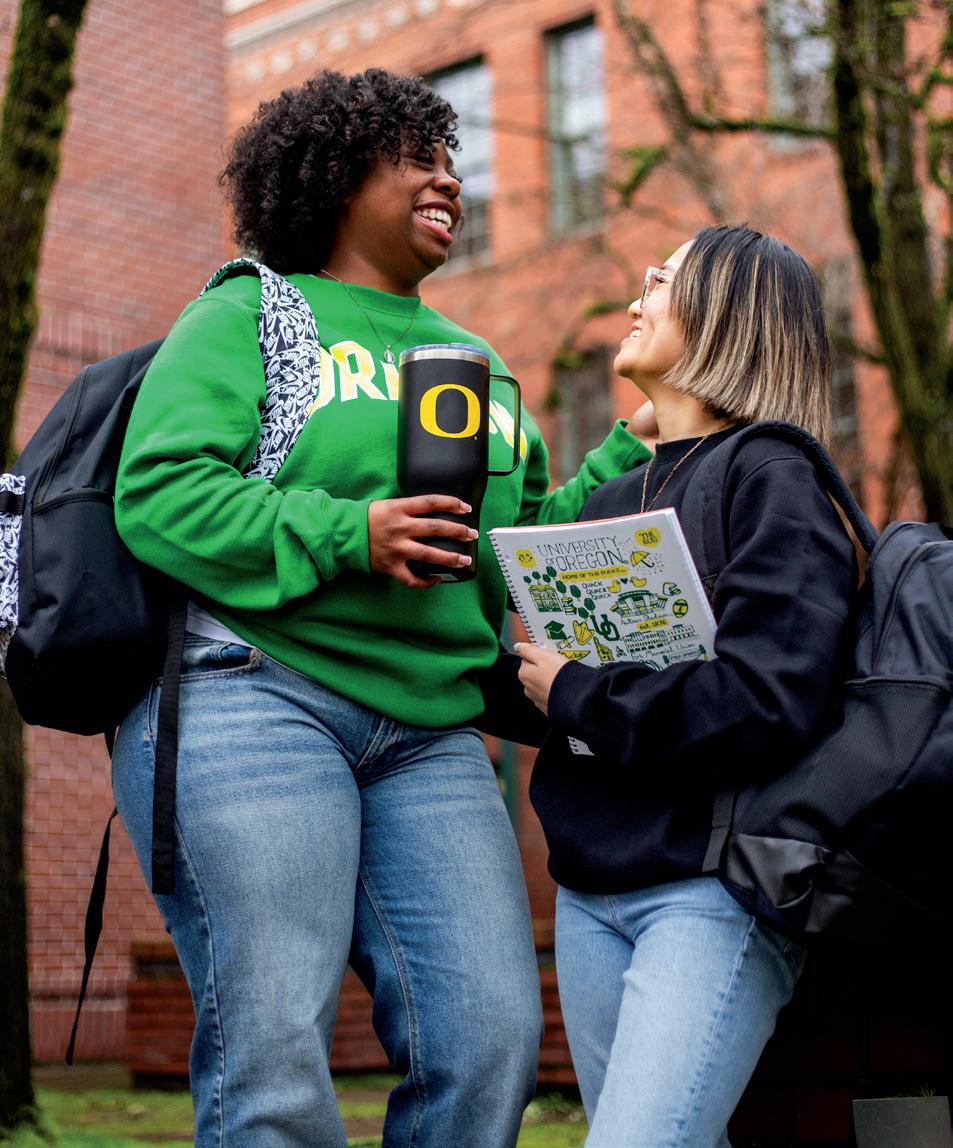
FOR OUR STUDENTS
OUR MISSION is to serve the students, faculty and staff of the U of O. Here are some of the ways we have this past year:
96 UO Students hired in 2024
22 UO Student Ambassadors represented our store.
$15,000 in Supply Cards donated to UO’s Basic Needs Program.
Nearly $3,000 donated to the Many Nations Longhouse.
Over $6,000 donated to the UO Cheer & Mascot Program.


Since 1920, the University of Oregon Bookstore / The Duck Store has served the book and supply needs of the University of Oregon. With locations in Eugene and Portland, we advance and foster the educational goals of the University of Oregon by creating an enduring sense of community among all Ducks — past, present and future. From working at our counters to studying in the classroom; from directing our stores to cheering in the stands; the people we serve — the students — are the very people who are The Duck Store. Thank you for supporting us and our non-profit mission. Be more.

Gluten allergies impact about 2.4 million people throughout the US. Navigating these challenges remains an increasingly difficult task for college students affected.
Every weekend, fast food restaurants fill with dozens of University of Oregon students and glow against the rainy Eugene nights. Friends chat over pizza, fried chicken and cookies as they breeze from one event to the next. The food they consume is simply the backdrop to their evening. But for students with gluten allergies, food is a nagging part of their foreground.
It’s easier to just not eat than to actually eat sometimes, which I’ll typically find myself sometimes doing.
Zach Rains student with gluten allergy
Food Allergy Research & Education (FARE), a leading research institute and non-profit, estimates that 2.4 million Americans suffer from wheat-related allergies as of 2024. According to the Celiac Disease Foundation, celiac disease — an autoimmune disorder causing severe gastrointestinal symptoms from gluten and gluten cross contamination — affects about one in one hundred people globally.
Many of Eugene’s beloved fast food restaurants are reported to have limited gluten-free options. A large portion of students with gluten sensitivities and celiac disease haven’t set foot in many of the most popular venues like Dave’s Hot Chicken. Those who have eaten at these restaurants describe disappointing experiences. “I mean, I’ve gone to Dave’s with my friends but there’s literally nothing,” said Lara Clute, a UO student with celiac disease, “I had the pickled veggies in a cup — definitely not the experience of a normal college student.”
Clute, like many other glutenfree students, sticks to eating at a few restaurants that they’ve deemed safe, whether that’s because of how educated the restaurant staff is, how many precautions are followed for cross-contamination, or simply how many gluten-free choices they can order. This significantly limits their options when it comes to eating out.
Due to the lack of choices, some gluten-free students said they consistently make potentially unsafe food choices while on the go, while others opt for not eating at all.
Zach Rains, a member of Chi Psi with celiac disease, is always busy between school and events with his fraternity. “It’s easier to just not eat than to actually eat sometimes, which I’ll typically find myself sometimes doing,” he said.
In contrast, Bee Baumstark, a student with a gluten allergy, sometimes feels that they have no other choice than to eat at restaurants that may not be the safest. They wish they could avoid cross-contaminated food, but it seems too difficult in a college environment.
Social dynamics also contribute to restaurant stress for gluten-free students. Students express feeling anxious when they’re the only one in the group who can’t eat at a restaurant. It’s common to feel like a burden or annoyance even when people are willing to change plans. Clute’s thought process while eating out with a group balances between the need to self-advocate and the desire to not appear too “picky.”
Baumstark has a similar thought process, emphasizing how alienating constantly advocating for safe food and restaurants can feel. Finding safe food to eat is always on their mind, but the majority of college students don’t give it a second thought. Glutenfree students agree with Baumstark — it’s exhausting.
Restaurant dilemmas are mirrored in another common place college
students eat — dining halls. UO’s housing website boasts about allergen-free options with the disclaimer, “Because many dishes are made in the area where gluten has been prepared or used in recipes, we cannot guarantee housemade options are 100 percent gluten-free.” Opting for the term “made without gluten” negates some of the responsibility for supplying safe options, especially for celiac students.
Students who ate in the dining halls their freshman year reported repeatedly eating the same few meals. “There [were] about five things that I switched around throughout my whole freshman year,” said Rains.
Not all of UO’s dining hall options are created equal either. Elainie Myers, a student with a gluten sensitivity, said their experience on the Carson dining plan was “miserable.” They felt that most things at Carson were gluten-based and there were a limited number of meals they could eat each week. Carson had a gluten-free pizza, but it was only available at certain times that would conflict with Myers’ school schedule.
When students transition to living off-campus, new difficulties arise pertaining to grocery shopping. Gluten-free food is known to be more expensive and harder to find. A quick search on Safeway’s website corroborates this fact. Searching the term “bread” returned a myriad of options for as low as $2.49, while “gluten-free bread” returned less than a page worth of options, the cheapest of which was $5.99.
“I’m always at the grocery store and I’m always spending so much money,” says Baumstark. Some places, like Whole Foods or Market of Choice, have more gluten-free items, but are out of budget for a typical college student.
Ready-made options are typically unavailable for gluten-free students too — ramen is an example. There have been times when Myers reports getting home from a long day only to

There [were] about five things that I switched around throughout my whole freshman year,
Zach Rains student with gluten allergy
find that they have nothing for dinner. They would then have to head back out to buy ingredients and come back home to cook — an inconvenience with an already packed schedule. Ready-made options would be ideal for busy days but that simply isn’t an option for many gluten-free students.
Students’ limitations around restaurants, dining halls and grocery stores contribute to stress and anxiety already present in college environments. For Baumstark, navigating food with a gluten sensitivity feels more stressful than college; the time and money invested in eating gluten-free is a burden. Many gluten-free students find that they get sick from accidentally ingesting gluten more often when in college, making it difficult to get schoolwork done. Baumstark also spoke candidly about how this affects their body image and past eating disorder. It is triggering to constantly have significant pressure around food and to get sick so often from it. Gluten can
also cause bloating when consumed by allergic individuals, leading to feelings of dysmorphia.
Because gluten allergies’ presence is overwhelming, students have learned to deal with them alone. But it still makes a profound impression when the people in their lives make efforts to show them support. The biggest struggle of a gluten-free life for many students was the lack of understanding.
It’s impossible to change the practices of every restaurant, dining hall and grocery store. But it is possible for those who have someone gluten-free in their life to learn a bit more, reach out or be willing to do something as simple as changing restaurants. Just knowing someone has a marginal understanding — on a late night drive to the grocery store, sitting at a restaurant table with an empty plate or risking getting sick out of necessity — can be enough.
I’m always spending so much money at the grocery store.
Bee Baumstark student with gluten allergy


Eugene’s drag community builds community and creates acceptance for all individuals

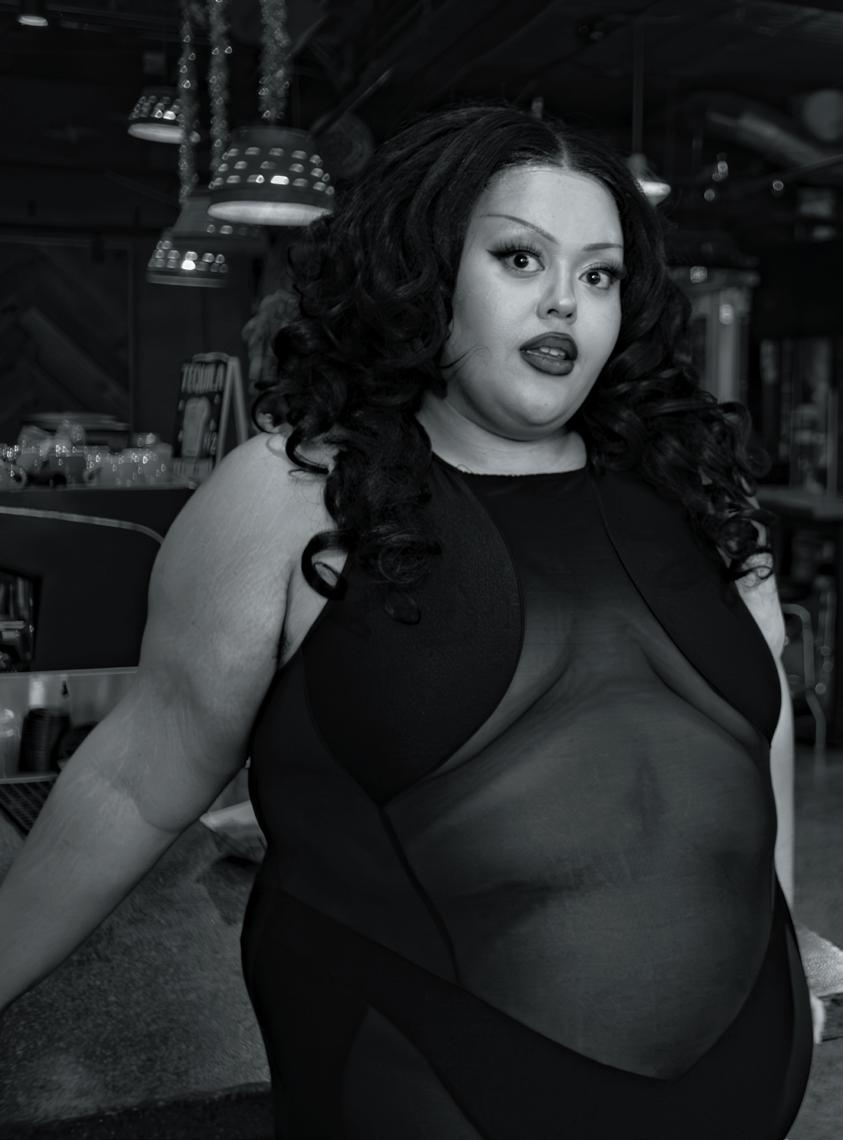
Eugene is proud, creative and welcoming, which has created unique and supportive spaces for all individuals, especially the queer community. Drag performers are at the forefront, allowing people of all identities to feel seen, heard and represented through elaborate shows and events.
(Left) Lyta Blunt is one of Eugene’s most important drag community members, winning Eugene Weekly’s Best Drag Queen for the last four years. Known as the ‘Mutha’ of Haus of Blunt, she plans shows for herself and her fellow queens.
The Spectrum, Eugene’s most popular gay bar, first opened in November 2018, hosting shows, meetups and brunches. These events range from speed dating to karaoke, from murder mystery parties to cookie decorating, and much more for the city’s queer population. On Aug. 11, the Spectrum permanently closed, making one less safe space for the gay community to gather.
Now, increasing numbers of queer and drag events are finding new homes for their expression — including at The Hybrid Gallery, which opened in February 2021. The owner, Anna Kaplan, moved from Philadelphia to Oregon 10 years ago and wanted to create a gallery that
One of my friends said, ‘you should do it, it’s not that hard.’ I did my first show a little over three years ago, and ever since then, I’ve been having so much fun
Lyta Blunt Eugene queen
celebrated and showcased all art forms.
Warm lighting and a carefully curated selection of chairs welcome audiences towards a black-and-white art deco stage while pieces from local artists hang on surrounding walls. During performances, spotlights follow cast members into a cheering audience and through rows of seats.
“We have hosted drag events in the

past, but I would say 100% the closing of Spectrum has created that need for a new performing space and we have been overjoyed to be able to host that type of performance art,” Kaplan said. “I feel very privileged to have created a space where the creators and performers feel comfortable bringing their art here.”
The Hybrid, and other venues including Seize the Slice pizzeria and The Barn Light, are filling the space Spectum’s closing left, helping rebuild the community and create spaces for queer events — including drag shows.
Lyta Blunt is a drag queen — and powerhouse — performing in and producing events, hosting drag workshops and much more. Her ambition and talent have been a beacon for Eugene’s drag community, bringing more shows and performers
to the area — and earning her Eugene’s Best Drag Queen, awarded by Eugene Weekly, this last year.
“I went to school for acting and had a performing background. I was doing social media, working and DJing for drag shows,” Blunt said. “One of my friends said, ‘you should do it, it’s not that hard.’ I did my first show a little over three years ago, and ever since then, I’ve been having so much fun.”
Blunt has created her own drag house and production team, Haus of Blunt, full of queens from Eugene and Portland. This team leans on one another to help perform and produce drag events for the Oregon community. Her recent event, “Bob’s Burgers: The Drag Show” sold out at the Hybrid, and the reinstated monthly Haus of Blunt Drag Brunches are expected to be a hit.

Candy Whoreholla receives tips from the audience as she performs at “Haus of Blunt: Drag Brunch” on Nov. 24, 2024.
From left to right: Mona Chrome, Aqua Flora, Shirley Mental, Solaaria, Lyta Blunt; below: Heavy Cream and Candy Whoreholla. The queens and kings of “Haus of Blunt: Drag Brunch” pose together after their Nov. 24, 2024, show at The Barn Light.


(Left) Heavy Cream, one of Eugene’s few drag kings, gives face during his Nov. 24, 2024, performance at Haus of Brunch. The next performance of Cream’s show “Men at Work” is Jan. 17, 2025.
Haus of Blunt started in the late winter of 2022. “I was super lucky — I was new to town as far as performing, but because I had lived here for a long time, I had connections with venues,” Blunt said. “My career was advancing in a way I couldn’t totally keep up with, and I saw so many people in this community searching for something better; I wanted to see them do this to their fullest capacity. I was able to get a couple girls to the point of full-time drag performers.”
At “Haus of Blunt: Drag Brunch”, their event held at The Barn Light in downtown Eugene, queens and kings sat individuals at wooden tables where the venue offered breakfast and drinks. Throughout numbers, high heels marched through the aisles, standing on chairs and bars during fierce lip syncs. Even after the show, performers including Solaria, Aqua Flora, Shirley Mental and special guest Mona Crow chatted and smoked with their fans.
“I gained an entire community when I started doing drag, almost completely overnight,” Blunt said. This sense of camaraderie is abundantly clear, even just as a guest. After the show, Blunt’s cast slowly trickled out from the venue, each congratulating and complimenting her performance.
“I always tell people that when you see drag performances, it makes you feel like you can do the little, everyday things like wearing a crop top. Being in a space that is focused on giving love to queer people is such a good example for people who haven’t seen that or haven’t received that love themselves. I think that seeing people go crazy for someone on stage is such a heartwarming thing.”
Blunt has inspired and helped many Eugene locals build comfort in themselves through drag, like Drag King Heavy Cream, who first got into drag after attending one of Blunt’s drag workshops. Since then, he has won Eugene’s Best Drag King, also awarded by Eugene Weekly, two years in a row.
I’m really happy and proud to be making sure that everyone knows that there are drag kings and we slay and rock just as hard as other performers.. Everyone deserves to see themselves up on stage.”
Heavy Cream Eugene king
“I always loved drag but it didn’t seem like something I could really do — I never wanted to be a drag queen and I never saw where I fit in,” Cream said. “We’re definitely a different breed. There’s a different camaraderie and support in the king community that feels unique, and it really set the stage for me and my career.”
Cream has produced his own show, “Men at Work,” and their next performance will be Jan. 17, at The Hybrid at 8 p.m.
“I’m really happy and proud to be making sure that everyone knows that there are drag kings and we slay and rock just as hard as other performers,” Cream said. “We deserve just as much spotlight as you, and there is room for everyone. Everyone deserves to see themselves up on stage.”
These drag performers put marginalized identities in the spotlight, helping other queer, BIPOC and gender non-conforming individuals feel represented and welcomed in the Eugene community. Lyta Blunt, Heavy Cream and others are promoting an accepting culture for a younger generation to strive for, especially University of Oregon students like senior Gio Betancourt.
“I just love the energy and the environment. It’s like truly a space for a lot of people to express themselves and people spectating get to cheer on and feel the energy of the performer,” Betancourt said. “I think it’s a great way for the drag performer to express themselves in a way that they’re not usually going to at work. Drag allows people to express another side of themselves that’s more freeing; there are no limits.”
“As someone who is queer and trans, I have my own community that’s very well-educated about drag or other queer events, but for other people who may not be informed of those events. I think there could be a little bit more promotion on campus,” said Betancourt.
Eugene’s drag scene has helped individuals on and off campus see their most authentic selves throughout town, reflecting a sense of acceptance of the queer, trans and BIPOC communities. Especially during a more frightening time in politics for a lot of marginalized communities, these spaces act as a safe haven for so many people — creating a lasting impact on each individual and protecting everyone’s unique identities.

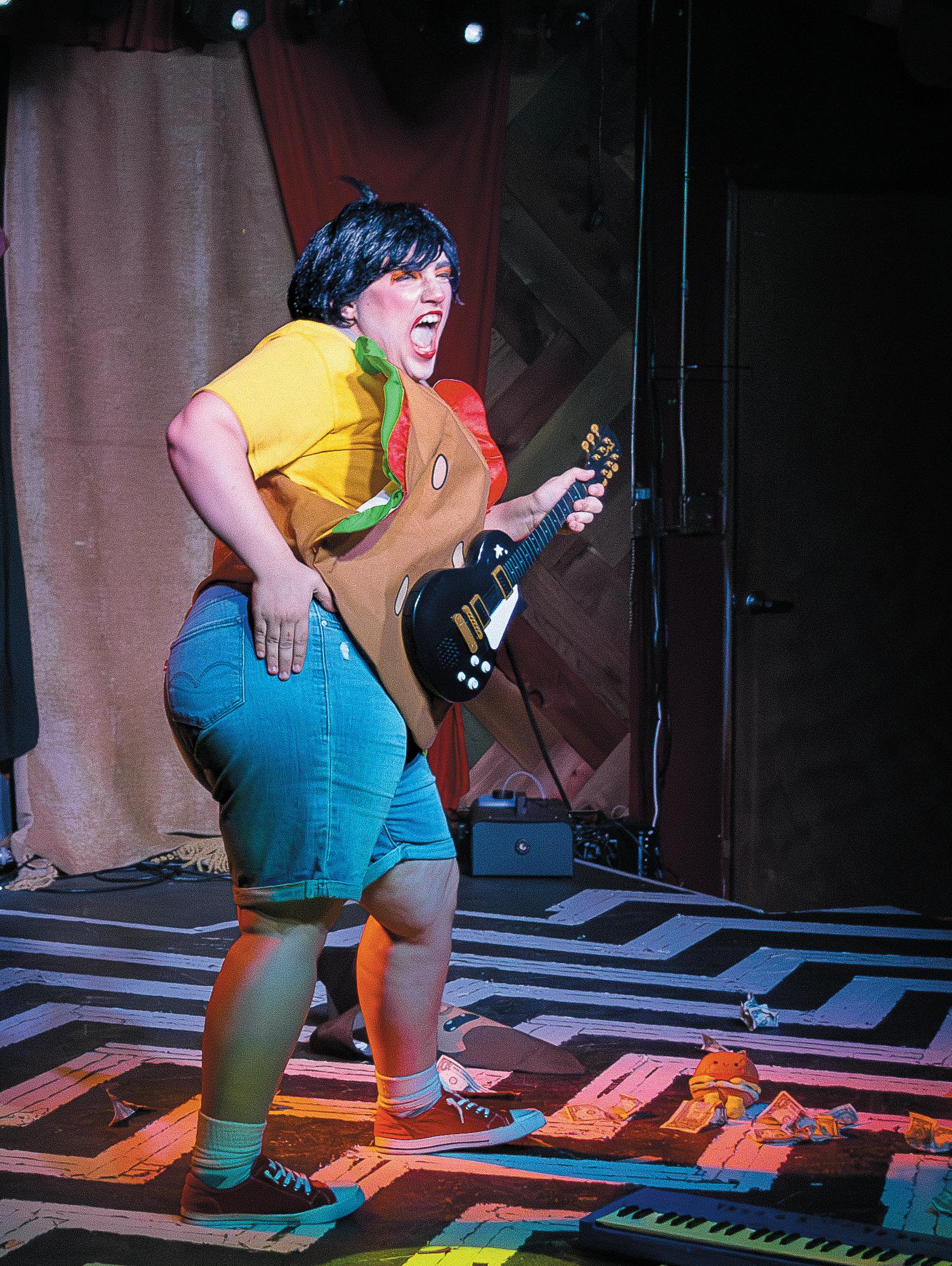


Photos from the sold-out performance of “Bob’s
Blunt,
Burgers: The Drag Show”
by queen Lyta
hosted at The Hybrid on Nov. 15, 2024.
Queen Aqua Flora performs her routine after painting herself green. Flora danced for the Sunday Haus of Brunch drag show at The Barn Light on Nov. 24, 2024.


